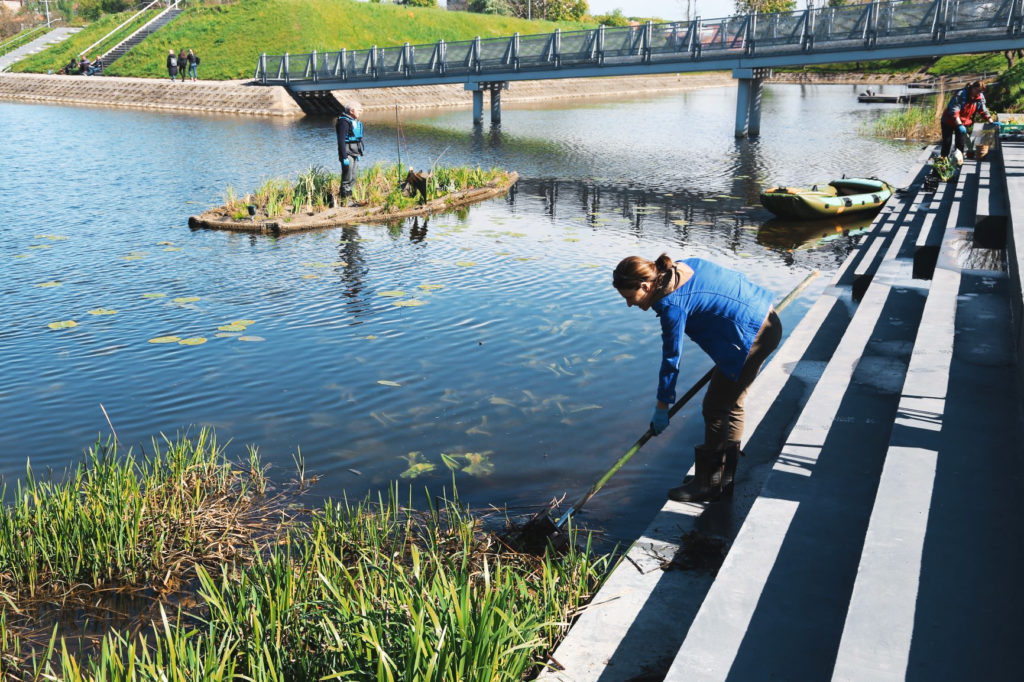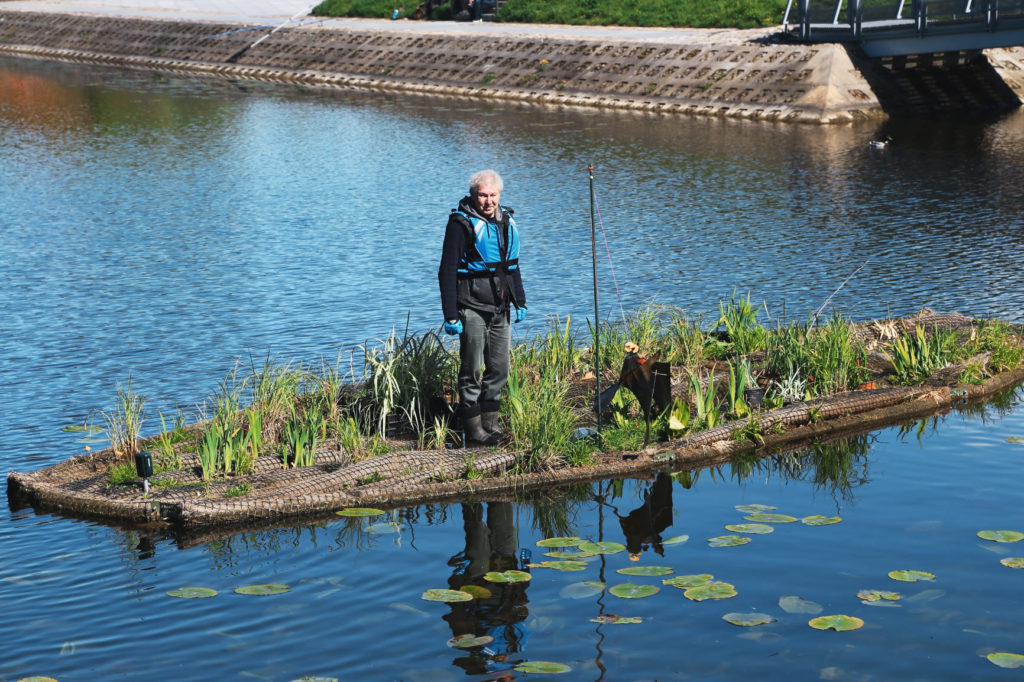Klaipėda University researcher team created islands both treat the water and decorate the environment
In 2019, a team of researchers from the Marine Research Institute of Klaipėda University, in collaboration with partners from Germany and Poland, launched a unique LiveLagoons water quality enhancement project: researchers formed artificial islands in their national water bodies and provided them with plants able by their roots to absorb eutrophication-causing chemicals – nitrogen and phosphorus compounds.
Thus, two birds are killed with one stone: a natural plant filter reduces cyanobacterial bloom and clarifies the water body; in addition, a new space is created for the local flora and fauna. “We noticed that all aquatic animals like islands – birds, frogs, and fish. The German partners report that eels have settled there. In an urban environment with a lot of concrete and little natural aquatic vegetation, the islands are especially favourable for enriching the ecosystem of water bodies, because one cannot cultivate either reeds or sedge there,” says dr. Jūratė Lesutienė, senior researcher of the Marine Research Institute, who predicts a good prospect for this innovation.

The first two experimental islands in the territory of Lithuania were formed by KU researchers in the Curonian Lagoon. Merely the vegetation typical of the local National Park was planted there and, according to prof. Artūras Razinkovas – Baziukas, the head of the researcher team constantly monitoring the islands, the plants successfully perform their ecological mission. The third artificial island was formed in the territory of the city, in the reconstructed Jonas Hill pond. The 24-square-meter structure, made for this project in Scotland, has been planted with aquatic plants to not only carry out a water treatment mission, but also to adorn the landscape of a well-visited area. And here, KU researchers faced unexpected challenges: the local waterfowl liked the island and its vegetation so much that almost the entire flower garden was quickly plucked off.
“The condition of the islands in the Curonian Lagoon is ideal. It is obvious that birds have no problem finding food there. Here, as we see, only a few plants have survived – sedge, water irises, and some others whose taste was probably not very popular with local birds. We came to the conclusion that the birds do not find the vegetable plant they need in the city centre,” says prof. Artūras Razinkovas – Baziukas, who is closely monitoring the condition of the island. He says he has tried various nature-friendly measures proposed by ornithologists to get the birds to bypass the structure, but so far all has been in vain. The birds like the island not only as a temporary rest place, but also as a snack stop.
Today, a new collection of aquatic plants was transported to the island and planted; the project team received them from the Netherlands. Professor Artūras Razinkovas – Baziukas makes a helpless gesture with his arms: because of the birds’ appetite, they suffer considerable losses, because aquatic plants are not cheap. “This time, we have chosen the plants very carefully, and ducks and swans may find their taste unattractive. We will try to fence in one part of the island so that the plants have more chances to survive and take root,” says Razinkovas, who so far is postponing the ambition to apply the millennia-old Aztec experience of growing tomatoes on artificial islands.

In the near future, the researchers of the KU Marine Research Institute will form such islands in two more water bodies in Klaipėda and Šiauliai. This will be a new qualitative step of the project team: the island structure itself will be designed and manufactured in Klaipėda. The task of the researcher team is to create a maximum ecological and nature-friendly structure on the water.

